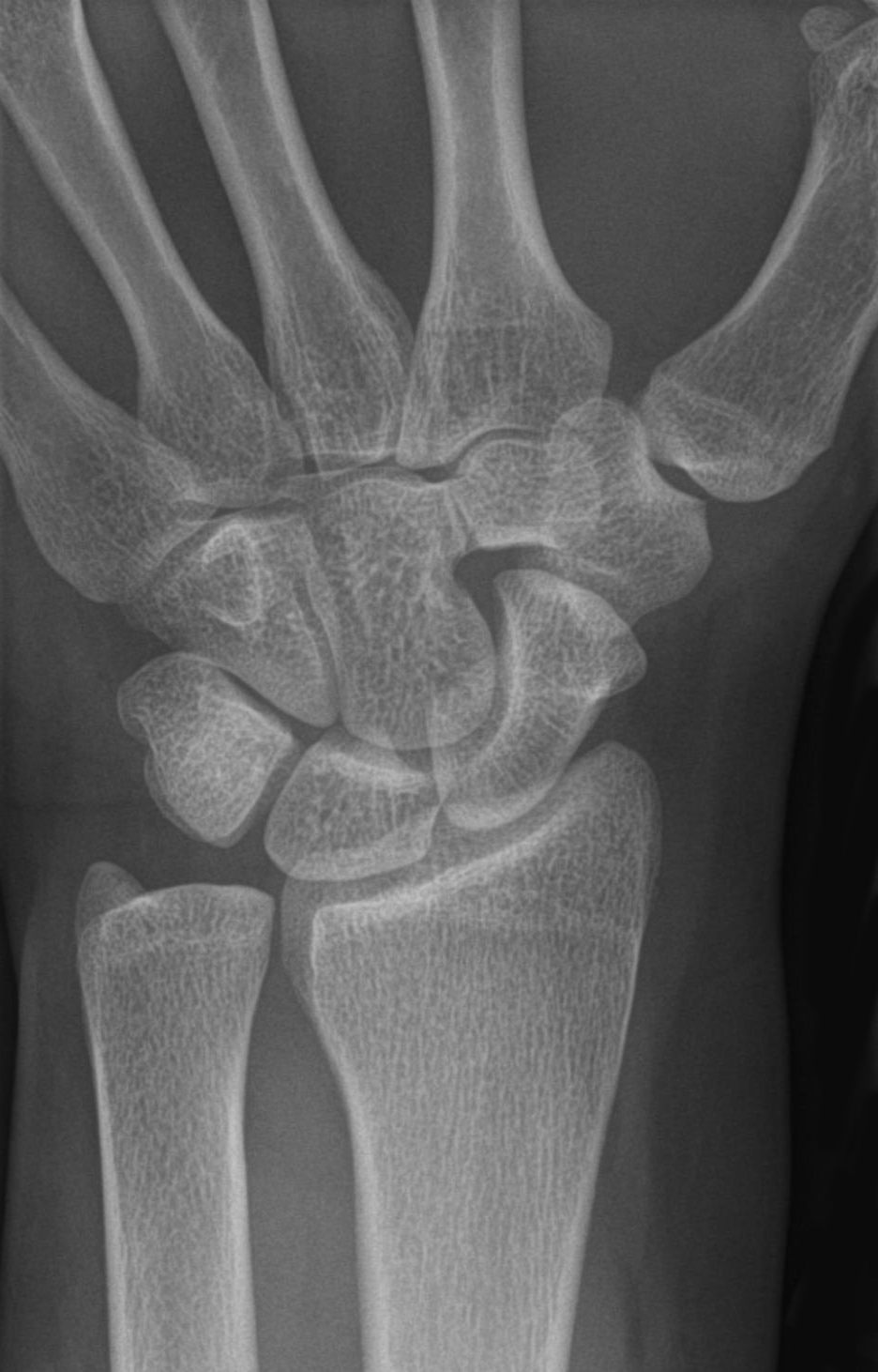Carpal coalition on:
[Wikipedia]
[Google]
[Amazon]
Carpal coalition is the abnormal fusion of two or more carpal bones when they fail to segment during intrauterine development. First described by Eduard Sandifort in 1779, carpal coalitions are often an isolated issue which connect two carpal bones in the same row of the wrist. These issues are congenital and occur at various rates throughout the population.
 The
The
Signs and symptoms
Patients with carpal coalition often offer no clinical significance and patients rarely have any associated issues. Though infrequent, some patients may complain of pain.Causes
Carpal coalition result from an incomplete separation of a common embryological carpal precursor in utero, during the fifth to eighth weeks.Subtypes
 The
The lunate
Lunate is a crescent or moon-shaped microlith. In the specialized terminology of lithic reduction, a lunate flake is a small, crescent-shaped flake removed from a stone tool during the process of pressure flaking.
In the Natufian period, a lu ...
and triquetral bone
The triquetral bone (; also called triquetrum, pyramidal, three-faced, and formerly cuneiform bone) is located in the wrist on the medial side of the proximal row of the carpus between the lunate and pisiform bones. It is on the ulnar side of th ...
s are the most common carpal bones to fuse together, resulting in a lunotriquetral coalition in 1% of people. 60% of patients with a lunotriquetral coalition will have it bilaterally. Among isolated incidents the capitate
The capitate bone is a bone in the human wrist found in the center of the carpal bone region, located at the distal end of the radius and ulna bones. It articulates with the third metacarpal bone (the middle finger) and forms the third carpomet ...
and hamate
The hamate bone (from Latin hamatus, "hooked"), or unciform bone (from Latin '' uncus'', "hook"), Latin os hamatum and occasionally abbreviated as just hamatum, is a bone in the human wrist readily distinguishable by its wedge shape and a hook ...
bones are the next most common to fuse followed by the pisiform
The pisiform bone ( or ), also spelled pisiforme (from the Latin ''pisifomis'', pea-shaped), is a small knobbly, sesamoid bone that is found in the wrist. It forms the ulnar border of the carpal tunnel.
Structure
The pisiform is a sesamoid bone, ...
-triquetrum, trapezium-trapezoid
A quadrilateral with at least one pair of parallel sides is called a trapezoid () in American and Canadian English. In British and other forms of English, it is called a trapezium ().
A trapezoid is necessarily a convex quadrilateral in Eucli ...
, scaphoid
The scaphoid bone is one of the carpal bones of the wrist. It is situated between the hand and forearm on the thumb side of the wrist (also called the lateral or radial side). It forms the radial border of the carpal tunnel. The scaphoid bone ...
-capitate, and triquetrum-hamate.
Carpal coalitions may further be divided into four subtypes:
* Type 1 - incomplete fusion with pseudoarthrosis
* Type 2 - fusion with a "notch" between the fused bones
* Type 3 - complete fusion
* Type 4 - complete fusion with other anomalies present
Treatment
Generally since carpal-carpal fusions do not cause unease or discomfort for the patient, and do not impair wrist function, treatment is not needed. However, in the minority of cases where carpal coalition causes persistent pain,arthrodesis
Arthrodesis, also known as artificial ankylosis or syndesis, is the artificial induction of joint ossification between two bones by surgery. This is done to relieve intractable pain in a joint which cannot be managed by pain medication, spl ...
, or the surgical fusion of a joint, has been proven to be beneficial.
Epidemiology
Carpal coalition occurs at a ratio of 2:1 in females, and are considered to have a multifactorial inheritance pattern. Further, the incidence according to race varies, with a rate of 0.1% in Caucasian populations, 1.6% in African American populations, and over 8% in certain West African tribes.Associated problems
Multiple carpal coalitions, or carpal coalitions that connect the two different rows of carpal muscles, are often associated with other anomalies including: * Ellis–Van Creveld syndrome *Holt–Oram syndrome
Holt–Oram syndrome (also called atrio-digital syndrome, atriodigital dysplasia, cardiac-limb syndrome, heart-hand syndrome type 1, HOS, ventriculo-radial syndrome) is an autosomal dominant disorder that affects bones in the arms and hands (the ...
*Turner syndrome
Turner syndrome (TS), also known as 45,X, or 45,X0, is a genetic condition in which a female is partially or completely missing an X chromosome. Signs and symptoms vary among those affected. Often, a short and webbed neck, low-set ears, low h ...
See also
* Tarsal coalitionReferences
{{reflist Congenital disorders of musculoskeletal system Wrist